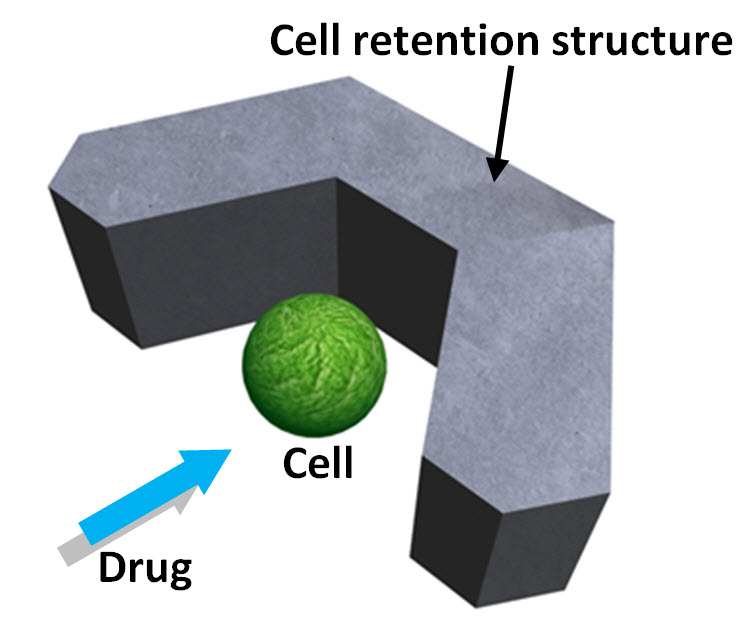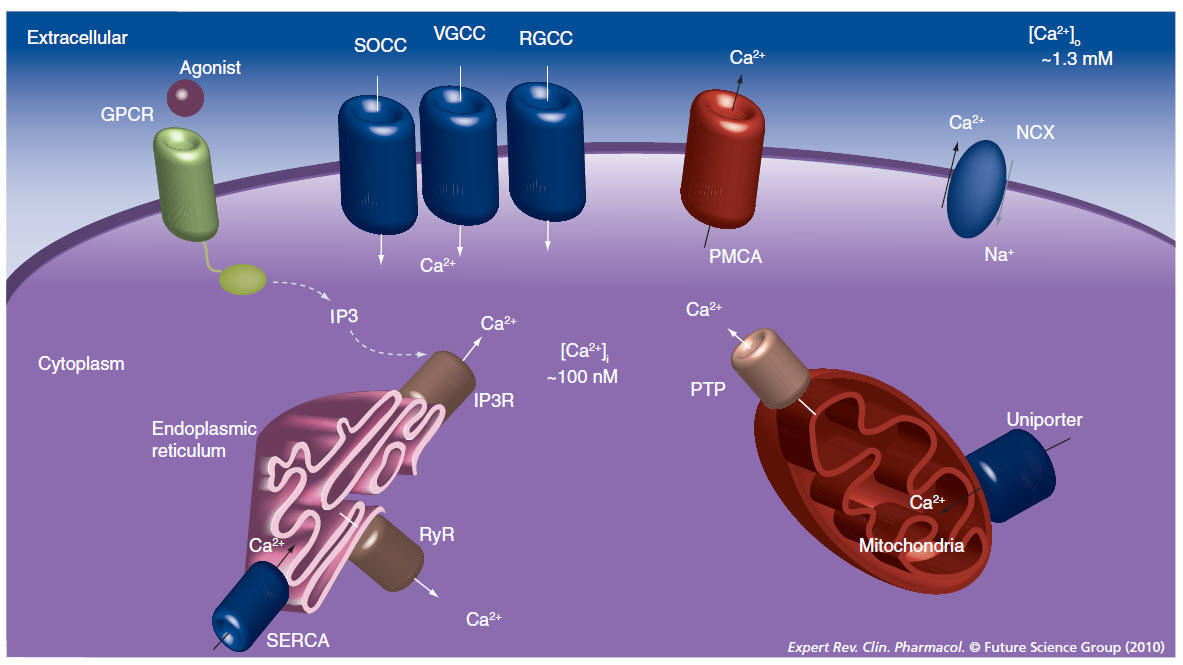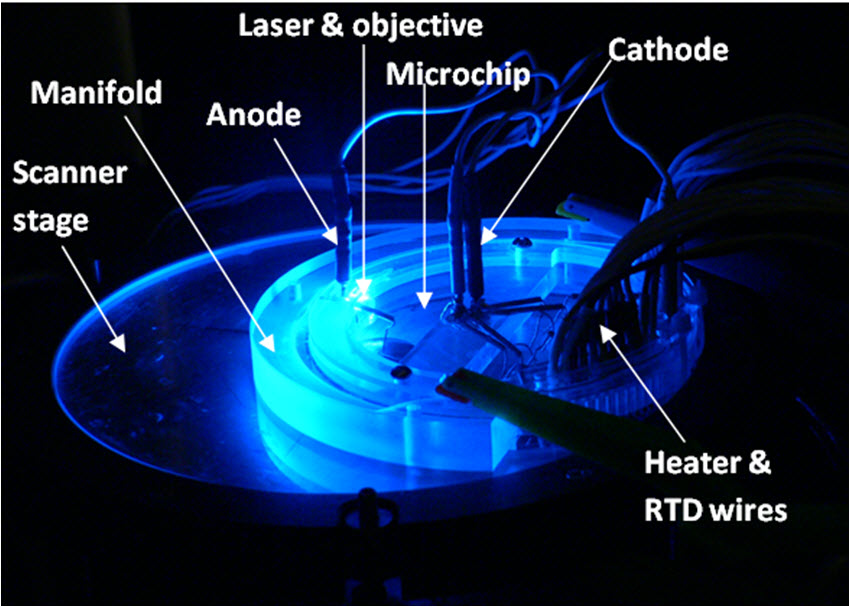Current Research
Bioanalysis, Biomedical & Environmental applications, and Catalysis using Microfluidic Lab-on-a-chip and nanotechlogy
References: What is microfluidic lab-on-a-chip? See Wiki Expedia. See also Introduction and bio-applications of microfluidic lab-on-a-chip from Biocompare. Please note the this page might not be updated in time. Please check the Publication page for more recent research projects! 
Miniaturized lab-on-a-chips provide versatile platforms for various biological applications, such as cellular analysis, genetic analysis, protein analysis, and so on. The figure on the right shows the publication trend of microfluidics during the last two decades.
The main research interest of Dr. Li group is centered on bioanalysis in multidisciplinary fields using microfluidic platforms and nanotechnology, including single-cell analysis, ultrasensitive subcellular analysis, genetic analysis, protein analysis, low-cost medical diagnosis, and forensics.
We target to solve the mystery underlain in intracellular signal transduction, cell biology, forensic science, cancer and infectious disease diagnosis and therapy, and environmental safety.
I. Pathogen Detection & Low-cost Medical Diagnosis
Pathogens often cause infectious diseases and significant economic losses, and frequently become serious public health concerns throughout the world, such as the massive outbreak of Escherichia coli O157:H7 infection occurred in Japan in 1996. Many global infectious diseases are caused by those microorganism pathogens, e.g., Meningitis, malaria, HIV, SARS, H1N1, TB…, just to name a few.For instance, according to the World Health Organization (WHO), “Worldwide, without epidemics one million cases of bacterial meningitis are estimated to occur and 200,000 of these die annually…
Pathogen detection technology is vital to the prevention and identification of such infectious diseases and biodefense threats. Recently, there is an increasing demand for simple, rapid and sensitive methods for multiplexed pathogen detection with the capacity to provide rich information of multiple pathogens from one assay. Additionally, many cases of global diseases happen in rural areas and developing nations, which usually cannot afford expensive and bulky instruments (e.g. DNA sequencing equipment). Therefore, the Li group is developing simple, low-cost, highly-portable microfluidic point of care (POC) devices and nanotechnology for sensitive and fast pathogen detection and infectious disease diagnosis, especially in resource-limited settings.


Select Publications:
1. Zuo, P., Li, X.J.*, Dominguez, D.C., Ye, B.C., “ A PDMS /paper /glass hybrid microfluidic biochip integrated with aptamer-functionalized graphene oxide nano-biosensors for one-step multiplexed pathogen detection”, Lab Chip. 2013, 13, 3921-3928.
2. Li, Xiujun, Yu zhou, Editor " Microfluidic Devices for Biomedical Applications", Woodhead Publishing (Now Elsevier), 2013, 684 Pages. (Book, ISBN 0 85709 697 4; ISBN-13: 978 0 85709 697 5). Also available from Amazon.
3. Benhabib, M.; Li, X. J., Strategies for Conducting Low-Cost Assays in Paper-Based Microfluidic Devices. In Microfluidic Devices for Biomedical Applications, Woodhead Publishing: 2013, 492-526. (Book Chapter)
4. Liu, X.Y., Mwangi, M., Li, X.J., O'Brien, M., Whitesides, G.M., " Paper-Based Piezoresistive MEMS Sensors", Lab Chip. 2011, 11, 2189-2196.
5.Li, X.J., Nie, Z.H., Cheng, C.M., Goodale, A.B., Whitesides, G.M., "Paper-based electrochemical ELISA", Proc. Micro Total Analysis Systems, 2010, 14, 1487-1489.
II. Paper/Polymer Hybrid Microfluidic Devices
Since the advent of microfluidic lab-on-a-chip in the 1990s, silicon, glass, different polymers, paper have been used for the microfluidic device fabrication. Each material has its own advantages and limitations as well. For example, the ease and low-cost of soft lithography and attractive optical properties of PDMS, have made PDMS microfluidic devices widely used in microfluidic bio-applications. However, PDMS microdevices are often associated with additional complicated chemical surface modifications for probe immobilization. Recently, paper-based microfluidic devices provide a new low-cost platform for different applications related to health care, food safety analysis and environmental analysis in low-resource settings. Hydrophobic barriers can be easily patterned on individual layers of chromatographic paper to form microfluidic channels, without stringent requirements of cleanroom facilities. The porous paper is compatible with biological samples, providing a 3D substrate for reagent storage, protection and reaction. Paper-based microfluidic devices, however, typically do not offer the high level of performance and functionality that PDMS affords in liquid flow control and delivery. Therefore, a new type of paper hybrid microfluidic devices that draw benefits from both device substrates debuted.
We developed the first paper/PDMS hybrid microfluidic biochip for pathogen detection, with aptamer-functionalized graphene oxide (GO) nano-biosensors integrated on the chip for simple, one-step, multiplexed pathogen detection. The porous paper inside detection wells provides a simple 3D substrate for nanosensor immobilization. The paper substrate used in this hybrid biochip facilitated the physical absorption of aptamer biosensors, without any complicated surface treatment or aptamer probe immobilization. In order to achieve high detection sensitivity, we developed another paper/PDMS hybrid microfluidic chip integrated with loop-mediated isothermal amplification (LAMP), an isothermal DNA amplification method, for high-sensitivity detection of global infectious diseases. It was interesting that we observed that the paper hybrid system enabled much more stable test results over a long period of 2 months than a paper-free microfluidic system.


Select Publications:
1. Zuo, P., Li, X.J.*, Dominguez, D.C., Ye, B.C., “ A PDMS /paper /glass hybrid microfluidic biochip integrated with aptamer-functionalized graphene oxide nano-biosensors for one-step multiplexed pathogen detection”, Lab Chip. 2013, 13, 3921-3928.
2. Dou, M.; Dominguez, D. C.; Li, X. J.*; Sanchez, J.; Scott, G. " A versatile PDMS/paper hybrid microfluidic platform for rapid and sensitive infectious diseases diagnosis", Anal. Chem. 2014, 86 (15), 7978-7986.
III. Nano-Biosensing & Technology
We focus on biosensing and other biomedical applications using nanomaterials and technology.
Select Publications:
1. Fu, G.; Sanjay, S.T.; Dou, M.; Li, X*. " Nanoparticle-mediated photothermal effect enables a new method for quantitative biochemical analysis using a thermometer", Nanoscale 2016, 8, 5422-5427. (Impact Factor in 2016, 7.4)
2. Dou, M.; Sanjay, S. T.; Dominguez, D. C.; Zhan, S.; Li, X.* A Paper/Polymer Hybrid CD-Like Microfluidic SpinChip Integrated with DNA-Functionalized Graphene Oxide Nanosensors for multiplex qLAMP Detection, Chem Comm 2017, 53, 10886-10889. DOI: 10.1039/C1037CC03246C
3. Katla, S.K.; Zhang, J.; Castro, E.; Bernal, R. A.; Li, X.* Atomically-precise Au25(SG)18 nanoclusters: Rapid single-step synthesis and application in photothermal therapy, ACS Appl. Mater. Interfaces 2018, 10(1), 75-82. DOI: 10.1021/acsami.7b12614.
4. Dou, M.; Garcia, J. M.; Zhan, S.; Li, X*. Interfacial nano-biosensing in microfluidic droplets for high-sensitivity detection of low-solubility molecules. Chem Comm 2016, 52, 3470-3473. (inside Front Cover)
IV. Nanomaterial-mediated photothermal sensing, therapy, & other applications
We for the first time developed a new photothermal immunoassay based on nanoparticle-mediated phototheral effects. It is also the first time we explored quantitative bioanalysis using a common thermometer as a low-cost quantitative signal reader.
Select Publications:
- Fu, G.; Sanjay, S. T.; Zhou, W.; Brekken, R.A.; Kirken, R.A.; Li, X. * Exploration of Nanoparticle-Mediated Photothermal Effect of TMB-H 2O 2 Colorimetric System and Its Application in a Visual Quantitative Photothermal Immunoassay , Anal Chem 2018, 90, 5930-5937. DOI: 10.1021/acs.analchem.8b00842.
- Fu, G.; Sanjay, S.T.; Dou, M.; Li, X*. " Nanoparticle-mediated photothermal effect enables a new method for quantitative biochemical analysis using a thermometer", Nanoscale 2016, 8, 5422-5427. (Impact Factor in 2016, 7.4)
- Katla, S.K.; Zhang, J.; Castro, E.; Bernal, R. A.; Li, X.* Atomically-precise Au 25(SG) 18 nanoclusters: Rapid single-step synthesis and application in photothermal therapy , ACS Appl. Mater. Interfaces 2018, 10(1), 75-82. DOI: 10.1021/acsami.7b12614. (2018 IF 8.5)
V. Environmental Science, Technology & applications
We focus on environmental analysis and environmental pollutant removal using microfluidic devices and nanomaterials.
Select Publications:
1. Zhan, S.*; Zhang, Y.; Shi, Q.; Li, X.* Efficient NH3-SCR removal of NOx with highly ordered mesoporous WO3(x)-CeO2 at low temperatures, Appl. Catal. B: Environmental. 2017, 203, 199-209. (Impact Factor in 2016, 9.45)
2. Dou, M.; Garcia, J. M.; Zhan, S.; Li, X*. Interfacial nano-biosensing in microfluidic droplets for high-sensitivity detection of low-solubility molecules. Chem Comm 2016, 52, 3470-3473. (inside Front Cover)
3. Zuo, P., Li, X.J.*, Dominguez, D.C., Ye, B.C., " A PDMS /paper /glass hybrid microfluidic biochip integrated with aptamer-functionalized graphene oxide nano-biosensors for one-step multiplexed pathogen detection", Lab Chip. 2013, 13, 3921-3928.
VI. Nanomaterial-mediated Catalysis
This includes sensing signal amplification, biomass conversion and environmental applications.
Select Publications:
1. Zhan, S.*; Zhang, Y.; Shi, Q.; Li, X.* Efficient NH3-SCR removal of NOx with highly ordered mesoporous WO3(x)-CeO2 at low temperatures, Appl. Catal. B: Environmental. 2017, 203, 199-209. (Impact Factor in 2016, 9.45)
VII. Single-cell Analysis
Cells are heterogeneous in nature. For example, individual cells response differently to a given stimulus (e.g., drug candidates). Conventional bulk assays often overlook such rich information underlying single cell behaviors. Therefore, single-cell analysis is of great interest in biological, clinical, pharmaceutical and forensic sciences. Insight into the chemical makeup and dynamics of single cells can also result in the mechanistic understanding of cell functions in complicated cellular environments.
We are developing novel microfluidic tools to investigate cellular heterogeneity in a complex environment, to study genetic mutation in cancer and other diseases, and for ultrasensitive forensic analysis.
VII. Ultrasensitive Subcellular Analysis
A main reason that the mechanisms of many diseases and cellular functions are still unclear is because we lack a full understanding of cellular events at the subcelluar level. Although there are powerful imaging methods (e.g., electron microscopy) for studying the morphologies of cells and subcellular architectures, no general strategy has been developed for probing the biochemical compositions from ultra-small individual organelles. The primary reason for this lack of techniques in extracting biochemical information from individual compartment lies in the minute amount of samples from nanoscale sub-cellular structures.
We therefore are developing ultrasensitive techniques for subcellular analysis, which will be used in studying cellular signal transduction and genetic biomarkers in cancer and aging.
VIII. Tissue-based Bioassays
Current fundamental investigations of human biology, and the development of therapeutic drugs, commonly rely on 2D cell culture systems. However, cells in human bodies are located in a 3D complex environment, where the cell growth is often affected by the diffusion-limited distribution of oxygen, and nutrients and so on. For instance, the mass transport of oxygen and nutrients limits cell proliferation to distances less than a few hundred microns in living tissues from capillary blood vessels, while such distributions cannot be mimicked by 2D cell culture. In addition, such mass transport also needs to be fully considered in tissue engineering, a growing fast research area.
We are developing strategies to combine 3D cell culture with microfluidics, which will be used to study cell biology in a controlled environment.
IV. Forensic Science
Such as forensic DNA STR typing:
Select Publications:
- Liu, P., Li, X.J ., Greenspoon, S.A., Scherer, J.R., Mathies, R.A., " Integrated DNA purification, PCR, sample Cleanup, and capillary electrophoresis microchip for forensic human identification", Lab Chip . 2011, 11, 1041-1048.
We are also working in these following fields.
Key Words:
Microfluidics; Lab on a chip; Nanotechnology; Nanosensing; Bioanalytical chemistry; Environmental Analysis; Biomedical engineering; Low-cost medical diagnosis; Point-of-care Analysis; 3D cell culture; Tissue Engineering; Drug delivery; Catalysis; Biomass Conversion.
Cellular analysis; Single-cell analysis; Sub-cellular analysis; Genetic analysis; Forensics; Protein analysis; Immunoassay; Intracellular calcium; Multidrug resistance (MDR) .








